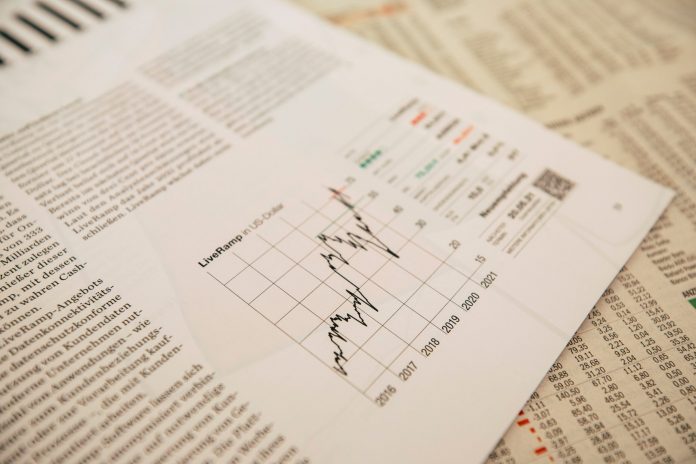Constructing a reasonable portfolio isn’t that hard and, if well funded and held onto for a few decades, you’ll reach almost any reasonable financial goals without ever getting extreme.
Today’s Classic is republished from The White Coat Investor You can see the original here.
Enjoy!
I don’t spend a lot of time on this site discussing portfolio construction. This is mostly because I think I can give people more bang for their reading buck talking about financial planning kind of stuff like getting your savings rate right, managing student loans well, and utilizing tax-protected accounts to the maximum. However, I am also quite liberal in what I consider to be a reasonable portfolio. I’m a true believer that there are many roads to Dublin.
Reasonable vs Not Reasonable Portfolio
However, I think it is time to point out something that to me is very obvious but clearly is not obvious to everyone. There are certain people in this world with some very….ahem….unique (i.e. extreme) political, economic, and investing viewpoints. Sometimes these people sound VERY smart on their blogs, in comments, or on internet forums. They rattle off all kinds of interesting economic factoids, throw out a lot of fancy acronyms that you’ve never heard of, and suggest that they’re in the know about the future and you are not. What I prefer to do when I run into people like this is to simply ask them what their asset allocation is. Having looked at thousands of portfolios over the years, I’ve gotten pretty good at identifying “Reasonable vs Not Reasonable”. It’s a little bit like the classic emergency physician (or really hopefully any physician) skill of “Sick vs Not Sick”. You might not know what the patient’s diagnosis is, but that doesn’t mean you can’t (and better) start treating them and you sure as heck don’t send them home with reassurance.
Examples of Not Reasonable Portfolios
Let me give you some examples of portfolios that are being used or recommended by some of these folks:
- 1/3 Land (not income property, just vacant land)
- 1/3 Gold (not a gold ETF, not coins, the actual bullion)
- 1/3 Fine Art (not an art fund, the actual paintings)
I’m not going to bother arguing about the reasons the investor gave for this portfolio, I’m just going to tell it like it is. This portfolio is stupid. If this is your portfolio, you have a very good chance of not meeting any sort of reasonable financial goals unless you have a truly extreme savings rate. Costs (transaction, storage, insurance, etc.) are high, the “investments” are 100% speculative, and the tax treatment is poor. Here’s another one:
- 1% Gold Mining Stocks (using an actively managed mutual fund with an expense ratio of 1.5%)
- 44% Gold Bullion
- 55% Treasury Bills (essentially cash)
7.5% CommoditiesNow, if you knew for sure that the stock market was going to drop 90% next week, the bond market was going to drop 50% immediately afterward, and that real estate was going to be sold for pennies on the dollar 3 months from now, this portfolio might make some sense. But the number of future economic scenarios where this is the right portfolio is so limited that this portfolio is also pretty darn nutty. One more:
- 7.5% Gold Mining Stocks
- 7.5% Emerging Market Stocks
- 15% “Rare Physical Assets”
- 5% “Hobby Trading Account” (primarily used to short miners, commodities, and stocks)
- 5% TIPS
- 52.5% Money Market Fund (cash)
You can’t make this stuff up. 15% stocks (but ignoring 95% of the market), 5% bonds, 27.5% alternatives and over 50% cash. The best part is the shorting of the assets that are held long elsewhere in the portfolio.
Choice and Consequences
These don’t seem to be dumb people. If you listened to them make comments and talk about economics and politics they seem to read a lot. But it is very clear that they don’t understand even the basics of portfolio construction and have very extreme views on the future.
Some of these folks are “permabears”, some are “goldbugs”, and others are conspiracy theorists. Sometimes all three at once. But they don’t seem to have insight into the fact that just being a contrarian doesn’t somehow guarantee investing success. Consider what has to happen for portfolios like these to end up being the right portfolio over the long run going forward. We’re basically talking about Financial Armageddon. There isn’t a lot of space between these portfolios being the right portfolio and The Walking Dead where the right asset allocation is AK-47s, bullets, and canned goods. What good are your land, gold, and paintings now?
The biggest consequence of holding portfolios like these (which are generally either hyper-conservative or composed of large amounts of collectibles, speculative instruments, and other alternative investments) is that long-term expected returns are low. It turns out that the typical investor needs to take a substantial amount of risk in order to reach her reasonable financial goals. She needs her portfolio to do a lot of the heavy lifting. She needs growth. And to get growth, you need investments with reasonably high returns. If you don’t invest in those investments, you will need an extreme savings rate to reach your reasonable goals. This is why the typical 35-year-old with a portfolio that is 1/4 cash, 1/4 bonds, 1/4 gold, and 1/4 whole life insurance is almost surely making a mistake. Just how high does your savings rate have to be with a very conservative portfolio? I’ve discussed it before in this post. Here’s one of the charts from the post illustrating what your savings rate has to be for a given return. The returns on the left side of the chart are after-inflation, after-tax, and after expenses.
| Savings Rate for 50% Pre-Retirement Income Placement | ||||||
| Years To Save | ||||||
| 15 | 20 | 25 | 30 | 35 | 40 | |
| 0% | 83.3% | 62.5% | 50.0% | 41.7% | 35.7% | 31.3% |
| 1% | 76.9% | 56.2% | 43.8% | 35.6% | 29.7% | 25.3% |
| 2% | 70.9% | 50.4% | 38.3% | 30.2% | 24.5% | 20.3% |
| 3% | 65.3% | 45.2% | 33.3% | 25.5% | 20.1% | 16.1% |
| 4% | 60.0% | 40.4% | 28.9% | 21.4% | 16.3% | 12.6% |
| 5% | 55.2% | 36.0% | 24.9% | 17.9% | 13.2% | 9.9% |
| 6% | 50.7% | 32.1% | 21.5% | 14.9% | 10.6% | 7.6% |
| 7% | 46.5% | 28.5% | 18.5% | 12.4% | 8.5% | 5.9% |
| 8% | 42.6% | 25.3% | 15.8% | 10.2% | 6.7% | 4.5% |
As you can see, if you’re only matching inflation after-taxes and inflation (i.e. a 0% return), and you want your portfolio to replace 50% of your pre-retirement income, you would need to save 50%+ of your income to retire early and 35-40% to retire after a full career. Compared to a 5% real return, you would have to save 2-3 times as much of your income for retirement. That’s just not doable for most people. So what that means is that folks with a hyper-conservative portfolio will simply have less money. Less to spend, less to give, and less to leave to heirs. Choices have consequences.
Value Investing?
Now some of these folks consider themselves “value investors” after the mold of Warren Buffett. Never mind that Warren Buffett’s “portfolio” is primarily of companies completely or mostly owned by Berkshire Hathaway, plenty of common stocks, and a large dollop of cash. No gold. No fine art. No commodities. No TIPS. If you wanted to do what the world’s greatest value investor recommends, go buy an index fund.
Some of these portfolio extremists don’t use a static asset allocation. They plan to change the portfolio when some vague future event happens and traditional assets like stocks, bonds, and real estate become a better deal. Don’t get me wrong. I wish I could buy stocks with 5% yields, bonds with 8% yields, and Cap Rate 10 income properties too. But not only are they not available in our current economic environment, but they may never again be available. If you decide to wait for that moment, you could be waiting (and missing out on gains from) decades of investing. You might even die first.
There is too much faith in using current valuations to predict future returns. Vanguard did a little study [link no longer available] to see just how much predictive value the Price to Earnings (P/E) ratio of stocks had with regard to future returns. They found that stock valuations had almost no (explained less than 10% of the variance) predictive value in returns over the next 1 year, and only moderate (38-43% of the variance) predictive value over the next decade. Other markers of valuation were even less useful. You don’t know what the future holds and neither does anybody else.
Timing the Market?
It turns out that timing the market, getting out before prices drop, and getting back in before they rise is exceedingly difficult to do successfully in the long run, especially after you take into account the expenses, taxes, time, and effort of doing so. You have to be right twice—when you get out and when you get back in. If you really possess this skill, there’s no reason you should keep it to yourself and your measly 6 or 7 figure portfolio. You should be running billions of dollars and will be handsomely rewarded for doing so. In fact, you should use extreme amounts of leverage and you will soon control a large share of the world’s wealth. If you’re so smart, how come you’re not rich?
Even some of the brightest economic minds in the country can’t seem to predict the future. Exhibit A: Alan Greenspan’s Irrational Exuberance speech was given on December 5th, 1996. If you had pulled your money out of the market then and kept it out, you would have missed out on a 108% gain over the next 3 years. If you managed to stay in “like a fool” you doubled your money.
“But then the market crashed,” you say. Sure. It went down from 2000-2002. But if you had just stayed put, even without any new contributions, you still ended up with an annualized return of 4.42% over that 6 year period. Going to cash wouldn’t have given you a different result. If you stayed the course for a couple more years, that increased to 7.62%. Bailing out of a bull market early can be almost as damaging to your long-term returns as selling out in a bear market.
Consider the Future
When building your portfolio, you need to consider a few things. First, what are all the potential economic futures that may lie ahead of us? Which ones do you think are most likely? How likely are they? What are the consequences of you being wrong? What should your asset allocation be in order to reach your financial goals in as large a percentage of future economic scenarios as possible? Anybody who honestly contemplates the answer to these questions is likely to end up with a reasonable portfolio such as one of these 150 portfolios. Moderation is your friend. Extremism is your enemy.

A wet canyon on New Year’s Day is for extremists. Investing is not.
Most readers of this blog are still going to be fine, even in an extreme future economic scenario. If I permanently lost 75% of the value of my stocks, 50% of the value of my bonds, half of my home equity, and my entire business, I would still be a millionaire. Per the 2013 Census, the average net worth of someone my age is $46K. And that’s in the US, perhaps the richest country in the history of the world. We may have hyperinflation and an unemployment rate of 30%, but I’m still going to be able to find work. I became a millionaire within 7 years once. I can do it again. I’ve got skillz to pay the billz. And so do most of you. So why would you invest like even a terrible economic future is going to somehow destroy you? It’s not. And if it does, you’re still going to be way better off than the vast majority. People talk about tracking error (basically that your portfolio doesn’t perform like most people’s portfolios) like it is inconsequential. It isn’t. If you lose a bunch of money but so does everyone else, you’re still just as wealthy relatively speaking. But missing out on a 100% gain because you read the wrong blogs and watch the wrong Youtube videos? That’s going to affect your relative wealth.
Avoiding Extreme Portfolios
Do you have an extreme portfolio? Here are a few questions to ask yourself. If you can honestly answer “no” to each of them, then you don’t have an extreme portfolio.
# 1 Do You Have Less than 50% of Your Assets in Some Combination of Stocks, Bonds, and Real Estate?
If more than 50% of your portfolio is “alternatives”, you’re probably making a mistake.
# 2 Do You Have Less than 25% of Your Portfolio in Risky Assets with a High Expected Return like Stocks and Real Estate?
Taking inadequate levels of risk is a good way to fail to reach your investment goals. Even a retiree needs some assets likely to best inflation in the long run.
# 3 Do You Have More than 20% of Your Portfolio in “Speculative” Investments That Don’t Make Money and Rely Completely on the “Greater Fool” Theory to Generate a Return?
These include commodities, precious metals, non-income producing real estate, currencies, cryptocurrencies, and other collectibles.
# 4 Are You Invested in Fewer than 20 Individual Securities?
Failing to diversify is a rookie mistake. Individual security risk is an uncompensated risk. Come on people, this is Investing 101.
# 5 Does Any Individual Security or Property Make Up More than 5% of Your Portfolio?
If you don’t sit on the board or haven’t eaten dinner with all of the other owners of a business, there is no excuse for having more than 5% of your money in it.
# 6 Do You Own Fewer than Three Asset Classes?
Diversification is one of the few free lunches out there, both within an asset class and between them.
This portfolio construction stuff isn’t that hard. Pick something reasonable, fund it adequately, keep your costs and taxes down, and stay the course with it for a few decades and you’ll be able to reach your reasonable financial goals. If you run into someone that sounds smart but has some extreme economic views, ask them what their asset allocation is. If it doesn’t meet these criteria, they’re probably all hat and no cattle, even if they’re occasional right about short-term market movements. Even a broken clock is right twice a day and even a blind squirrel can find a nut.
What do you think? What criteria would you use to identify an “extreme” or “unreasonable” portfolio? Comment below!







